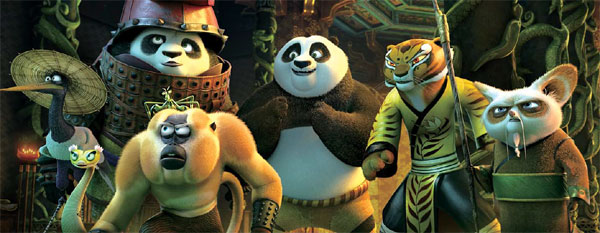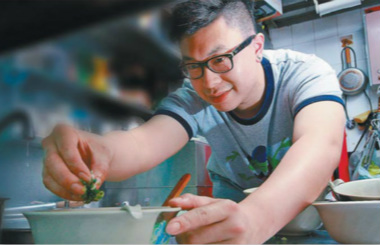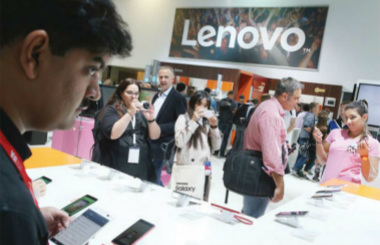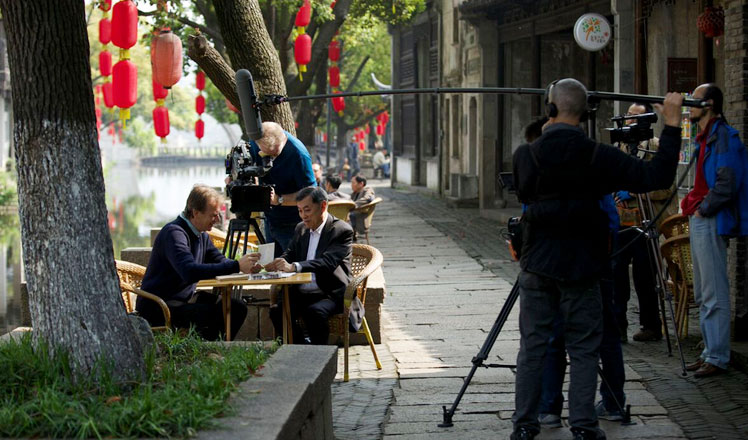Panda hero returns to roots
Updated: 2016-01-29 07:51
By Xu Fan(China Daily Europe)
|
|||||||||||
Eight years after Kung Fu Panda made waves globally, Po, the hero, becomes more Chinese in the latest sequel
Even foreigners who know little about China see the giant panda as a symbol of the Middle Kingdom. So what often disappoints the Chinese is that best-known panda character in the world of animation, from the Oscar-nominated Kung Fu Panda franchise, is thoroughly American.
Now, eight years after the first installment made waves globally, the Chinese now have Po, the title character, making an effort to be less American and more Chinese.

|
Top: A scene from the latest film of the Kung Fu Panda franchise, which will premiere globally on Jan 29. Provided to China Daily Above: Taiwan music icon Jay Chou with his protege, 16-year-old singer-songwriter Patrick Brasca, at a promotional event in Beijing. Jiang Dong / China Daily |
In a Chinese version of the film tailored for the world's second-largest movie market, Po and his fellow warriors, played by well-known actors, will speak in Mandarin. Though the actors' voices were post-produced, the animation has been tailored to match the speech. An English version is also available.
Also, from brush-painting used on landscapes to martial arts fights to ancient customs, all the scenes are faithful to Chinese reality, film company officials say.
The film, Kung Fu Panda 3, premieres globally on Jan 29.
While the previous two films in the franchise were made completely by Hollywood, the latest installment is a Sino-US coproduction backed by Glendale-based DreamWorks and Shanghai-based Oriental DreamWorks and China Film Group.
Explaining the collaboration, DreamWorks' CEO Jeffrey Katzenberg says that the Chinese animators are "a treasure trove" and that the coproduction will promote the Chinese animation industry to the world.
Director Jennifer Yuh Nelson says: "It's always been a big consideration for us to be as authentic as possible in how we treat the culture of China and the history of kung fu movies." The South Korean-American animator, in an e-mail interview with China Daily, says China's movie industry is "promising" and Chinese consumers "are becoming more discerning", which makes a localized version significant when to come to winning over the market.
China's latest annual box-office returns were 44.1 billion yuan ($6.7 billion; 6.2 billion euros) from 32,000 screens in around 6,000 cinemas in 2015, up nearly 50 percent year-on-year from 29.6 billion yuan in 2014.
So the figures make it easy to understand why many industry watchers say that the panda's stronger nod to its Chinese roots has more to do with profits than anything else.
China's movie market is the only one continuing to grow as the world's other major markets struggle.
China's current policy has a quota for foreign movies, allowing only 34 to be imported every year. Producers usually get a take of around 25 percent of the Chinese mainland's box-office takings, but a coproduction - not limited by the quota - is entitled a much higher share of up to 43 percent.
Meanwhile, as far as cultural conflicts go, when the first and second Kung Fu Panda movies were released in 2008 and 2011, respectively, many Chinese artists boycotted the films and called the franchise "a cultural invasion".
The coproduction, however, skirts that conflict.
As Oriental DreamWorks' Chairman Li Ruigang, quoted by Xinhua News Agency, says: "It (the new film) makes the panda on big screen seem more authentic. ... The cooperation between China and the United States marks a turning point - the panda is coming back home."
Separately, those who took in a recent preview of the movie in Shanghai - the city that hosts Oriental DreamWorks - say that the franchise has never been so tightly bound to the Asian world.
Nelson says that the American team was welcomed to Shanghai by Chinese colleagues wearing costumes of different dynasties. They also educated the US team about ceremonies involving tea, incense, martial arts and weddings.
"That level of commitment to detail is something that we will never get in the United States," she says. "We certainly have no access to that amount of enthusiasm from so many people who want to show us their culture."
Support was also forthcoming from China's showbiz sector.
In the Chinese version, veteran actor Huang Lei did the voice for Po, while Taiwan pop singer Jay Chou was the voice of the monkey warrior and sings the theme song, Try.
"As you will see, there are no seams, no subtitles. These animated characters are supposed to speak in Mandarin," Nelson says.
The local production means that the Mandarin pronunciation is authentic.
"They (the Chinese crew) have helped to ensure the Mandarin version feels natural to the Chinese, including idioms and sayings, and other nuances of Chinese culture," the director says.
With the glittering cast and positive reviews, some industry sources predict that the panda could become the biggest threat for domestic studios' leading offerings, competing for eyeballs during the highly profitable Spring Festival season.
As Zhang Zhiyuan, a box-office researcher, tells China Daily: "Most industry sources believe that the movie will surpass the 2 billion yuan mark with its comic tone, scenes and likeable characters, as it makes up a good choice for families."
xufan@chinadaily.com.cn
(China Daily European Weekly 01/29/2016 page21)
Today's Top News
Record number of Chinese tourists visited UK in 2015
Foreigners fill in Spring Festival courier gap
UK adventurer dies on solo journey
Families of expats in China can stay longer
China's growth envy of developed world
Foreigners find hard to buy China's rail tickets
Rags to riches saga underlines China's transformation
Leaders address Iran's thirst for growth
Hot Topics
Lunar probe , China growth forecasts, Emission rules get tougher, China seen through 'colored lens', International board,
Editor's Picks

|

|

|

|

|

|







